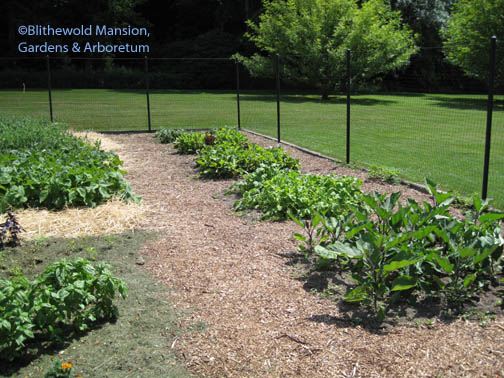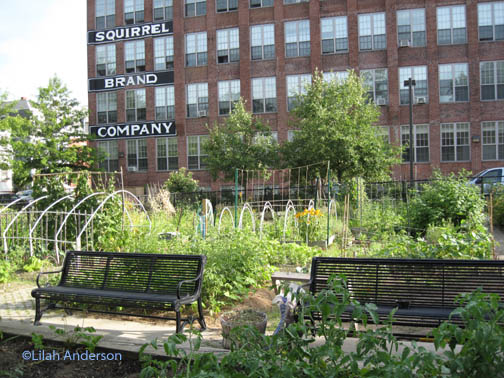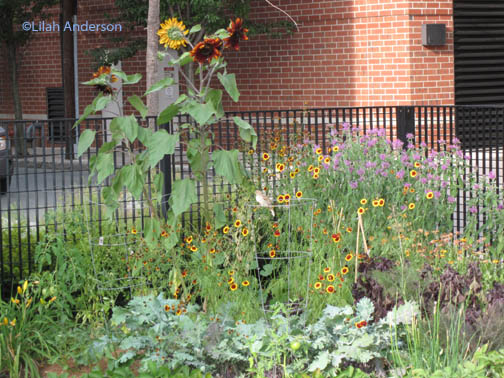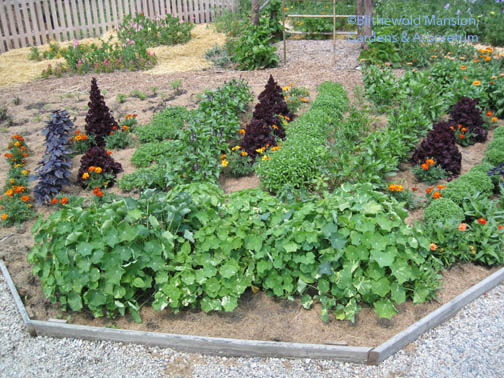Every Green Pocket Counts
For the last three years I have not let up begging our gardens intern, Lilah “Weed Woman” Anderson to write a guest post for the blog – on any garden topic of her choosing (vegetable gardening, please.) At long last, she gave in! Accompanying photographs are also by Lilah.
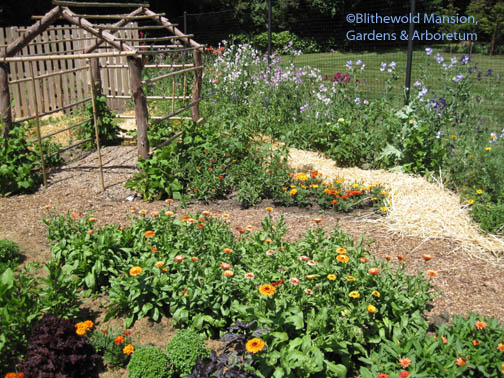 Blithewold’s vegetable garden has undergone some big changes this year. It has nearly doubled in size and the design has been re-organized to demonstrate a variety of different planting techniques. For my third year as the gardens intern I have been spending much of my time in the vegetable garden. Fortunately master gardener and devoted volunteer Dick Philbrick is there for helpful advice and a very green thumb.
Blithewold’s vegetable garden has undergone some big changes this year. It has nearly doubled in size and the design has been re-organized to demonstrate a variety of different planting techniques. For my third year as the gardens intern I have been spending much of my time in the vegetable garden. Fortunately master gardener and devoted volunteer Dick Philbrick is there for helpful advice and a very green thumb.
The main goal for this year’s garden is to be an educational resource to our visitors on different growing techniques. We have put in our usual rows with succession plantings as well as companion beds and hills for vines. These different planting methods work well for different kinds of gardens. So if you have a large space like us it’s easy to do rows, but for a cramped city garden companion beds may be a better route for maximizing space and productivity. The hills may also prove to be a challenge for a small plot, however I am experimenting with different trellising ideas that just may work for a tight spot.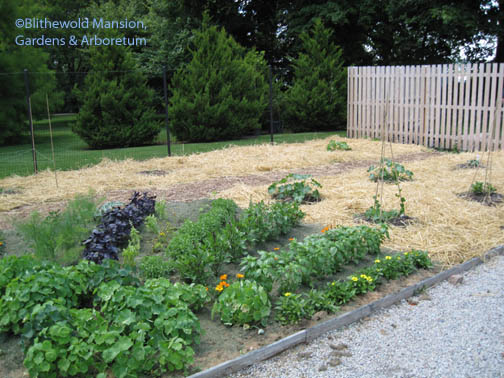
There are also three different kinds of mulches being used (straw, grass clippings, and woodchips) to accommodate the many different plants in the garden. The tomatoes are well suited to the thick golden straw whereas the petite herb and flower rows enjoy the finer grass clippings. For our pathways the woodchips keep down weeds and provide easy access to beds. The fourth section of the garden is devoted to Blithewold’s younger visitors. It is filled with lots of pathways around flower-beds. The deep purple salvias and the bright marigolds and zinnias are meant to attract birds, bugs, and butterflies. There are also some interactive plants like cotton and pineapple sage (which smells surprisingly like a ripe pineapple). Fred and Dan have designed a playhouse for our young visitors and camp attendees that is slowly being covered by pole beans. This area will hopefully spark an interest in children to grow vegetables and flowers of their own. Overall, we have incorporated a number of different vegetable growing methods to educate and inspire our visitors both big and small.
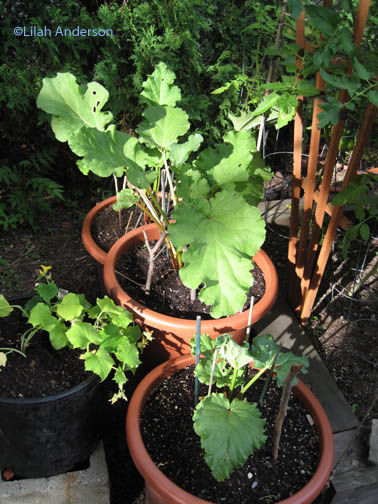 The idea of having a garden can seem daunting if only a small yard or terrace is available but on a recent trip to Cambridge MA it was easy to see that every green pocket can produce.
The idea of having a garden can seem daunting if only a small yard or terrace is available but on a recent trip to Cambridge MA it was easy to see that every green pocket can produce. 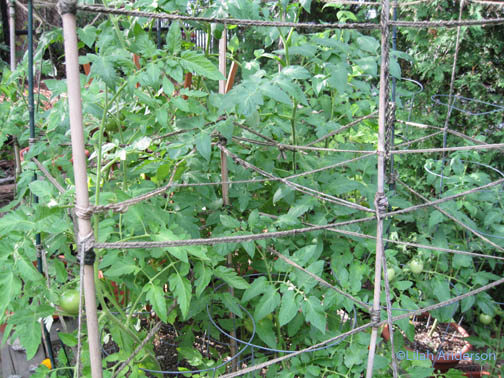 My boyfriend’s father has quite an impressive city garden that utilizes a large raised bed and numerous containers to avoid the lead-filled soil. I have to say I have never seen rhubarb growing so happily in a container nor have I seen such an intricate tomato trellis as in Ivan’s garden. The small but robust garden provides quite a harvest that even includes cucumbers and broccoli growing in containers.
My boyfriend’s father has quite an impressive city garden that utilizes a large raised bed and numerous containers to avoid the lead-filled soil. I have to say I have never seen rhubarb growing so happily in a container nor have I seen such an intricate tomato trellis as in Ivan’s garden. The small but robust garden provides quite a harvest that even includes cucumbers and broccoli growing in containers.
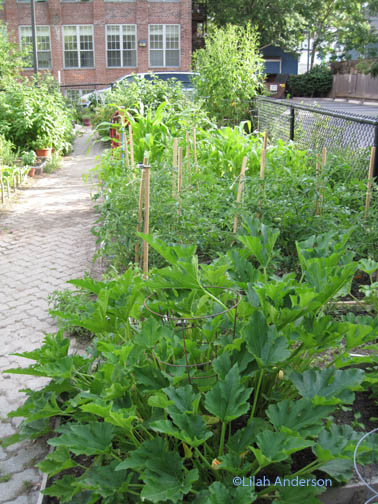 This tiny but productive plot inspired me to visit some of the Cambridge community gardens. There were two within walking distance from Ivan’s garden. The community gardens were composed of many small plots, all of which were stuffed full with a variety of plants. Many plot-tenders had creative combinations of plants to take advantage of space and maximize yield. A man and his daughter were already harvesting zucchini and another woman and her daughter gave me some of their ripe gooseberries to try. These pockets of green were an inspiration to me in furthering the educational aspect of the vegetable garden at Blithewold.
This tiny but productive plot inspired me to visit some of the Cambridge community gardens. There were two within walking distance from Ivan’s garden. The community gardens were composed of many small plots, all of which were stuffed full with a variety of plants. Many plot-tenders had creative combinations of plants to take advantage of space and maximize yield. A man and his daughter were already harvesting zucchini and another woman and her daughter gave me some of their ripe gooseberries to try. These pockets of green were an inspiration to me in furthering the educational aspect of the vegetable garden at Blithewold.
In an age of large food corporations it is refreshing to see so many people growing there own food and I hope that the Blithewold garden can serve to encourage visitors to try their hand at a vegetable garden.

